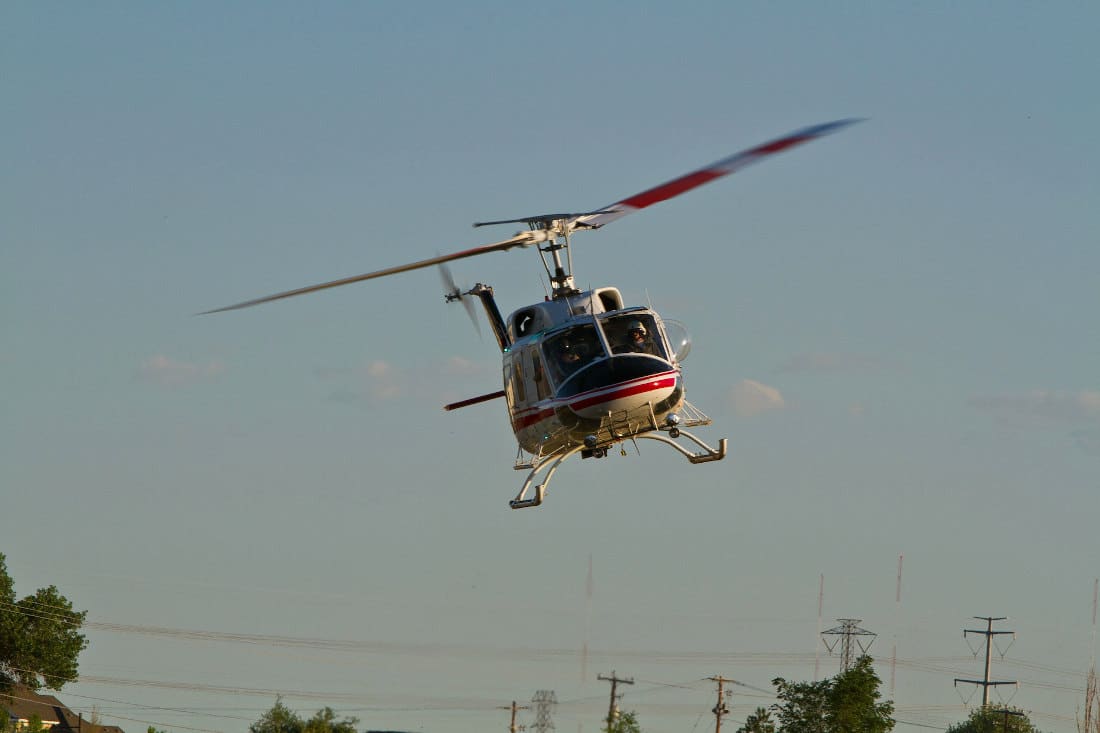Learning to Deal with Mast Bumping and Other Low-G Problems
It was an interesting transition going from fixed-wing (twelve years of it) to helicopters. So many things were the same but so many things were different. Take for example my introduction to low rotor RPM recovery procedures and an encounter with “mast bumping.”
Low Rotor RPM Recovery
When the Low RPM warning horn goes off, you need to have instinctual muscle memory to decrease the pitch of the blades, increase the throttle, and pull back on the stick to expose the rotor disc to more air, thus increasing the RPM. Like when your children hold those cheap foil windmills out the car window when you’re driving. The more perpendicular they are to the relative wind, the faster they spin.
What’d I do during my introduction to these procedures? Well, when I tell you that the Low RPM warning horn sounds eerily similar to the stall warning horn in airplanes, you can probably imagine what I did with the stick. Yeah, I pushed it forward. What happens when you’re driving and your kids rotate those windmills so that the disc is parallel with the relative wind? That’s right, they stop spinning. Our rotor RPM decreased even further to near catastrophic levels.
Fortunately, my instructor was johnny-on-the-spot with the controls and overcame my reaction, pulling back while decreasing the pitch and increasing the throttle. We went back to the airport and called it a day after that, both a little shaky and white from our near-fatal lesson.
It would take quite a few more lessons before I shook the muscle memory ingrained in me during my fixed wing training. But it wasn’t before long that I was able to properly react without even thinking about it, and the Designated Pilot Examiner for both my Private and Commercial checkrides was impressed with my reaction time.
Low-G Helicopter Scenarios
There’s another hazardous flight condition in helicopters that requires an immediate, proper reaction to avoid certain death (actually, in helicopters, what doesn’t?!). And that’s a low-G scenario in helicopters with certain rotor hub designs.
In normal flight, a helicopter is suspended underneath the rotor disc. Any changes made to the attitude of the rotor disc also affect the helicopter as a result of this (how & why the fuselage moves).
During a low-G flight condition, the helicopter fuselage is no longer suspended by the rotor disc – it’s more or less just floating in the air on its own. When the attitude of the disc changes, the fuselage is not affected.
So now imagine a helicopter moving through the air, unaffected by the rotor disc. But the pilot adjusts the attitude of the rotor disc full-forward. The disc pitches down but the fuselage does not. There have been a number of accidents where investigators have found that the main rotor disc cut through the cockpit canopy! Yikes.
Helicopter Crash possibly resulting from a low-g scenario:
There is another phenomenon that happens here. The fuselage is no longer affected by the rotor disc, but it’s still affected by the tail rotor. Tail rotor thrust, in a conventional American helicopter, is to the right. In low-G flight conditions, the tail rotor will often induce a rolling moment, rolling to the right in the direction of the tail rotor thrust. The natural reaction of a pilot will be to input left-stick to correct the roll to the right.
Well, because the fuselage is not affected by the main rotor, the disc moves while the fuselage does not. In many two-bladed rotor systems, this will cause a condition called “mast bumping”, where the main rotor hub, tilting to the left, contacts the rotor mast, which remains stationary. Due to the forces involved, the hub will shear the mast, and the disc will separate from the helicopter, flying away from you as you plummet to the earth. No, thank you.
The correct response when you feel weightless is to apply slight backpressure, allow the helicopter to settle back to one G, and then apply left stick to correct the roll to the right. If you don’t have this down, there’s good chance that your reaction will be incorrect due to the instinct to want to go left, not back, when you feel a roll to the right.
How I Successfully Avoided Mast Bumping
So there I was, flying an R-44 over Kingsbury Grade in Nevada, from Lake Tahoe to the Minden airport. This area is notorious for mountain wave turbulence, especially in the summer due to the uneven heating. This is a popular area for gliders, as some of these waves can lift gliders to upwards of 40,000 feet.
So I was descending into the valley when I felt the ship being hit by an updraft. A downdraft quickly followed, and I felt that weightless sensation in the seat. The nose of the helicopter dropped and then rolled to the right. Classic low-G.
I didn’t even analyze what was going on, I just instinctively eased back on the stick slightly, then when I felt my butt firmly in the seat, introduced a little bit of left stick to correct the roll.
Of course, I didn’t realize what was going on as it was happening because it was so quick. Once I got the spinny side back on top I analyzed what happened, and was then thankful for the training I received.
Don’t get upset when your instructor wants to do the same maneuvers over and over again. What a waste of time and money, you might say. There’s a reason behind all the madness!
Additional Material:
Here is a nice graphic from the US Army describing Mast Bumping:

And, for those interested, here is an older video also produced by the US Army about Mast Bumping:















Leave a Reply